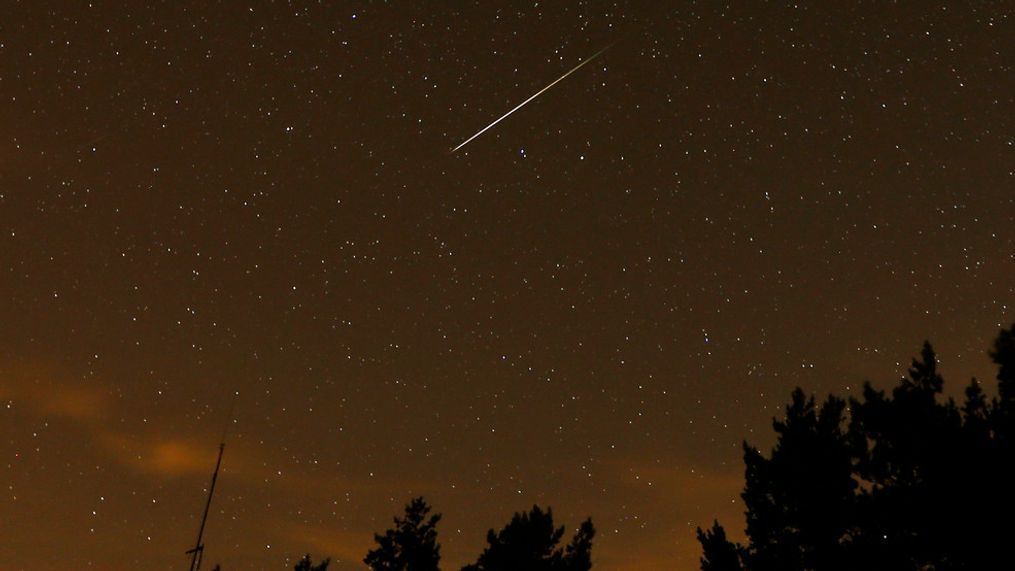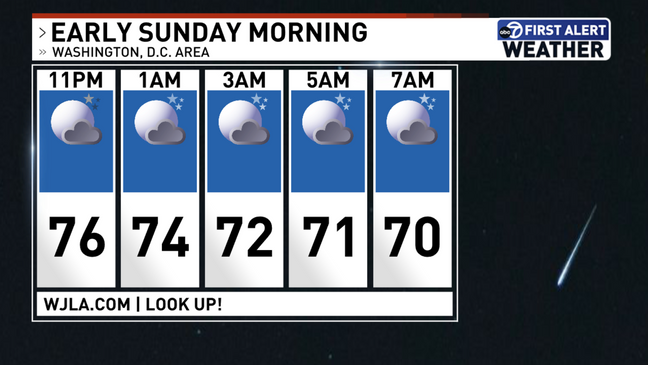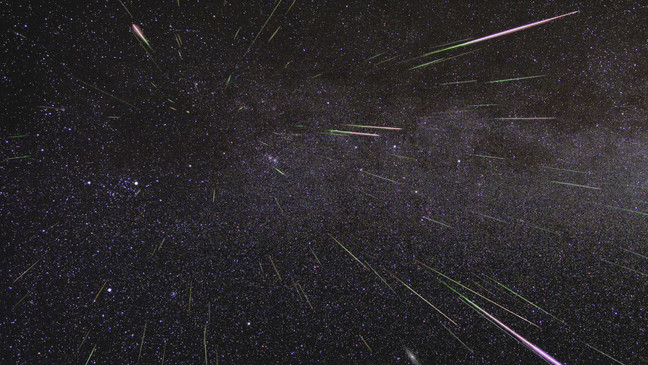Look up! Your guide to watching the Perseid meteor shower peak this weekend
WASHINGTON (7News) — Get ready for one of the most active meteor showers of the year! The annual Perseid meteor shower is active from mid-July through the end of August with the meteor shower peaking in the early morning hours of Sunday, Aug. 13.
The meteors from this shower are dust left behind by the comet Swift-Tuttle. This year, the moon will be at a waning crescent stage, meaning it will only be about 10 percent lit. More illuminated moon phases can drown out the dark sky making it hard to see the meteors.
BEST TIME TO WATCH
According to Tony Rice,NASA Solar System Ambassador, the best time to watch is the hours before dawn when the radiant point in the constellation Perseus is highest in the sky. When that point is lower, more meteors will be hidden below the horizon. Sunrise is at 6:18 a.m. EDT on Sunday, Aug. 13. This means the best time to watch is between 4 a.m. and 5:30 a.m. with twilight beginning at 5:51 a.m.
However, the Perseids are known to produce a few "earth-grazers" or meteors that skim the top of the atmosphere as early as 10 p.m. This produces visible meteors for longer, sometimes several seconds, with more persistent trails in the sky. There will be fewer, but potentially more spectacular earth-grazers than the more active times before daybreak.
LIST | Aug. 11-13: What's going on in the DMV this weekend?
SEE ALSO |NASA confirms 1,000-pound meteor hits Texas
While outbursts of activity were seen in the early 1990s and as recently as 2016, no significant increase is expected in 2023.
MAXIMIZE VIEWING
Dark site:This is the most important. Dimmer meteors will be hidden by light pollution.
Look to the darkest part of the sky: Meteors can appear anywhere in the sky, not just by the radiant point. If you can't travel to a dark rural site, just looking away from lights can increase your chances of seeing a meteor.
Be patient: Give your eyes 10-15 minutes to adjust. The longer you stay out, the better your chances. That predicted 5 meteors per hour is an average rate and could happen all at once or be spread out over several hours.
Later is better: Even if the calculated peak is in the evening, you'll see more meteors past midnight and closer to dawn because the radiant point is higher in the sky, thus hiding fewer meteors below the horizon.




